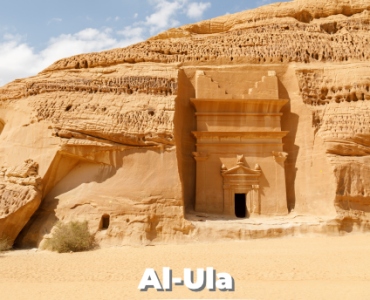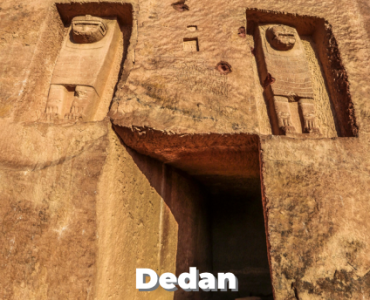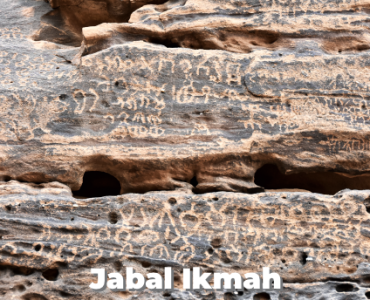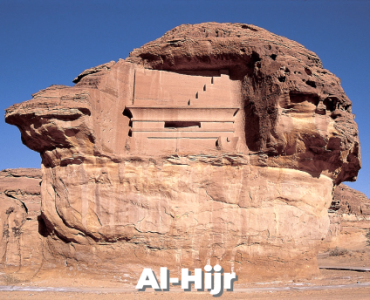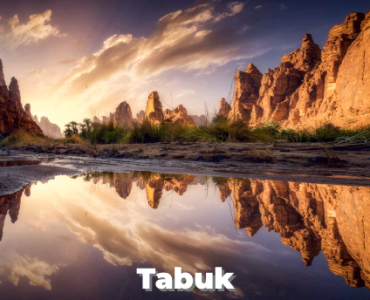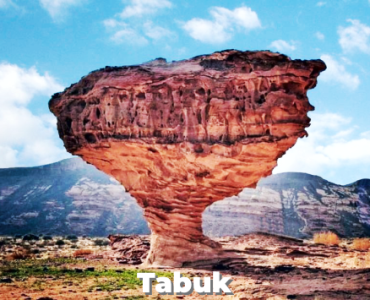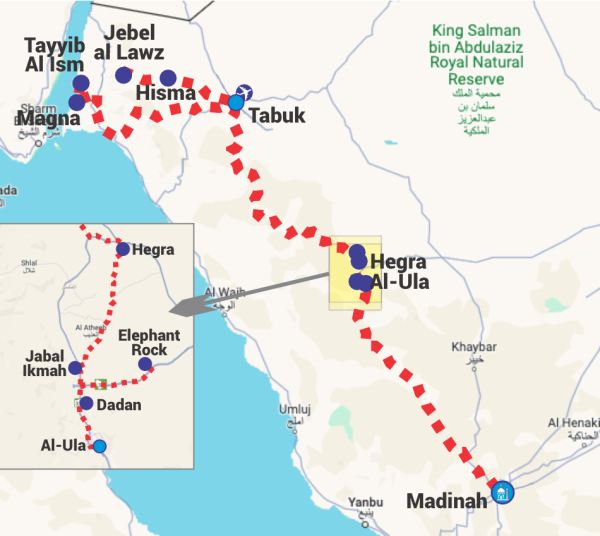The Nabatean Kingdom was an ancient civilization located in the region of modern-day Jordan, renowned for its capital city of Petra and its mastery of water management in the desert. The Well of Moses, also known as the Spring of Moses or 'Ain Musa in Arabic, is a legendary spring said to have been created when Moses struck a rock with his staff to provide water for the Israelites during their exodus from Egypt. This event, which is believed to have taken place south of Petra, holds significance in both Christian and Islamic traditions, symbolizing divine provision and the miraculous sustenance of the people in a harsh desert environment.
Day 1: Madinah, Al-Ula [205 miles]
Start your day with a long drive to the jewel city of Al-Ula. After a drive of about 4 hours reach your hotel for lunch. Relax in your resort. Dinner and overnight in Al-Ula. [L/D]
Day 2: Al-Ula
Breakfast at the hotel. Today we depart for Dedan/Ikmah tour. Al-Ula is an ancient oasis that is inhabited for the last 7000 years as testify ancient carvings in and around the oasis. During the 1st millennium BCE the city of Dedan develops thanks to its strategic location on the frankincense trade road to become one of the oldest Arabian kingdoms that ruled over most of what is today Tabuk and Madinah provinces. During the 1st century BCE the Nabatean people coming from Petra settled 30 kilometers north of Dadan in Al-Hijr where they built over a hundred monumental tombs similar to the ones they dug in Petra. We will start our exciting day with the visit of two ancient carving sites in Al-Ula, then will pass by the ancient city of Dedan that was an important oasis on the frankincense trade route between Southern Arabia and the Mediterranean World. Lunch in the city. After lunch, we get a glimpse into Al-Ula’s not-so-distant past on the Al Ula Old Town Tour. We will go through Al Ula Old Town, where pilgrims, travelers and permanent settlers congregated through the ages. Inhabited from before the 12th century up until the early 1980s, Al-Ula Old Town offers researchers unique oral histories and living memory that the area’s other heritage sites cannot. We will finish this special day on top of the Harrat Al-Uwayrid for an amazing viewpoint of the oasis of Al-Ula. Return to hotel. Dinner & overnight in Al-Ula. [B/L/D]
Day 3: Al-Ula (Hegra)
Today we will start our journey with the visit of the famous Hegra (Madain Saleh) which is the first site of Saudi Arabia that was listed as UNESCO World Heritage site. Madain Saleh, whose original name was Al-Hijr or Hegra in Greek, is the southernmost important city of the Nabatean Kingdom that flourished thanks to the caravan trade between the 2nd century BCE until the Roman conquest in 106 CE. It is the second richest Nabatean city in terms of monumental tombs with over a hundred decorated funeral monuments including some of the most vibrant and well conserved architectural prowess of the Nabateans builders. We will lead you through this fascinating site and reveal to you the secrets of its tombs, ancient inscriptions, stone structures, and many others. Lunch in the city. We depart to take a stroll under at the Al Ula Oasis Trail. Here you find towering date palms and smell the cool freshness of the earth. Stretching from the Heart of the oasis to the Alshaqary Trail, one of AlJadidah Trails, this beautiful, designated trail showcases the heritage of the Al-Ula Oasis. With picture-perfect locations dotting the way, the Heritage Oasis Trail is a must-visit while in Al-Ula. Before heading back to the hotel, we will visit Jebel Al-Fil (Elephant rock) for a relaxing time. Dinner & overnight in Al-Ula. [B/L/D]
Day 4: Al-Ula, Tabuk [224 miles]
Breakfast at the hotel. We depart towards the city of Tabuk. On our way, we will pass by the valley of Dissah (also known as Wadi Qaraqir) which is undoubtedly the most beautiful valley of Saudi Arabia with its 1,640 feet high sandstone cliffs on both sides of the canyon and the small rivers that runs through all year long. Every inch through this canyon is an amazement unique in the world. Dissah hosts another ancient oasis where we will see remains attesting of the long occupation of this wonderful place. We will have lunch en route. Continue to Tabuk, check in upon arrival. Dinner & Overnight in Tabuk. [B/L/D]
Day 5: Tabuk (Hisma) [275 miles]
Breakfast at the hotel. Today we will visit a place called Hisma, which is also known as the Wadi Rum of Saudi Arabia because of its majestic grandiose formations similar to the ones found on the other side of the border with Jordan. Hisma is home to hundreds of ancient rock art and ancient inscriptions, some in pre-Islamic scripts dating back to the caravan trade, and some in old Arabic dating back to the first decades of Islam. We will have a picnic during the excursion in the middle of the magic sceneries of Hisma. In the afternoon we will pass by the highest mountains in Saudi Arabia, the Jebel Al Laws, the mountain of almonds. People believe that this is the true site of the biblical Mount Sinai where Moses received the Tablets of Law. We will visit some sites that have features reminding the story of Moses. At the end of the day, we will head back to our hotel. Dinner & Overnight in Tabuk. [B/L/D]
Day 6: Tabuk (Tayyeb Al-Ism) [342 miles]
Breakfast at the hotel. Starting our tour today to Wadi Tayyib Al Ism (subject to approval by KSA authority), the possible location where Moses, brought his people out of Egypt. Tayyeb Al-Ism is the first place Moses (Musa) reached when he crossed the Red Sea (as per researchers) and one of the magical natural wonders of Saudi Arabia that takes visitors by surprise. Visit wadi Tayyeb al Ism valley one of the famous and most attractive places, surrounded by red-colored mountains and deep canyons this lush oasis was an ancient pit stop for weary travelers. The valley overlooks the sea and is known for its captivating nature and crystal. Picnic lunch, then proceed to visit the Springs of Moses it is one of 12 Springs of Prophet Moses (as) is a historical landmark located in the valley of Maqna, Saudi Arabia. The sprouting of water and its flow against gravity in the middle of the desert appears to be nothing less than magical. These springs also pump water in the famous valley of Maqna through the sand holes that are driven by water flowing from the ground. Drive to Al Suaedni Well Visit the Moses well at Maqna where it is believed that Moses took care of Jethro's (Prophet Shuaib) daughters and helped them take out water for their sheep and this is the first place where Moses (Musa) met Zippora, Jethro’s daughter in this place and after married with her. Magha’er Shuaib Midian (Al baad) is the land where Moses spent 10 years in voluntary exile before returning and freeing his people from Pharaoh Ramses II.) And the homeland of Jethro (Prophet Shuaib who was Mose's Father-in-Law). The Mugha’yer Shuaib seems to appear from nowhere in the reddish desert west of Tabuk. Dinner & Overnight in Tabuk. [B/L/D]
Day 7: Tabuk (Departure)
Breakfast at the hotel. Depending on our flight departure time, transfer to Tabuk Regional Airport for departure. Standard check out time is 12:00 pm. [B]
[B] = Breakfast | [L/D] = Lunch & Dinner | [B/L/D] = Breakfast, Lunch & Dinner


